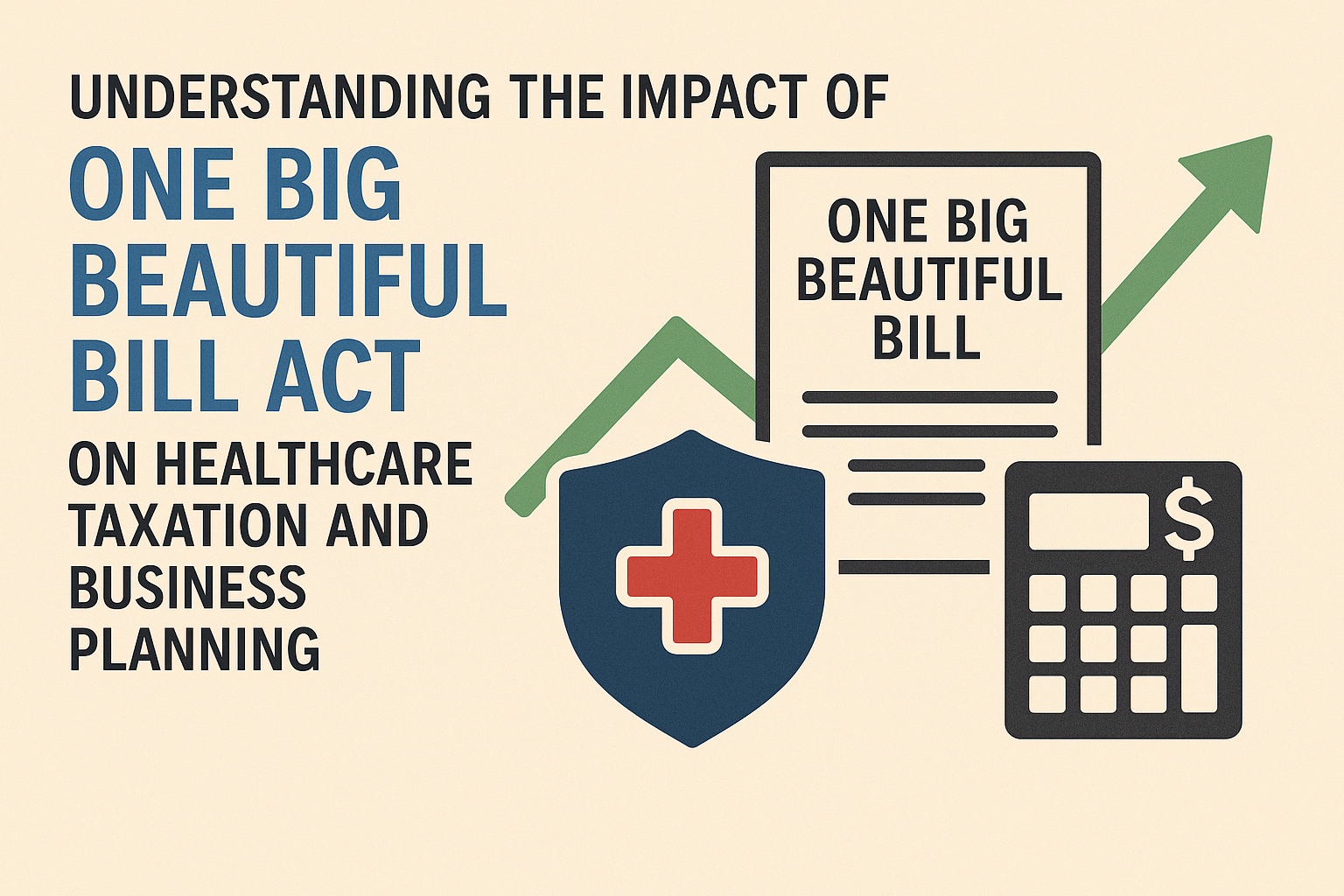Navigating Healthcare Margin Pressures and Financial Planning Strategies in 2025
Independent medical practices are facing one of the toughest financial landscapes in decades. Unlike large hospital systems, independent providers...
3 min read
Baldwin CPAs 9/9/25 2:46 PM

Signed into law on July 4, 2025 (Public Law 119-21), the One Big Beautiful Bill Act (OBBBA) is a sweeping tax reform that reshapes healthcare funding, taxation, and planning—and carries significant implications for businesses and healthcare organizations. For Baldwin CPAs’ healthcare clients, the Act demands revised compliance strategies and forward-looking financial guidance. Baldwin’s own overview of the Act highlights its breadth and its immediate impact on planning assumptions beginning with the 2025 tax year, with filings due in spring 2026. Read the full breakdown here.
While OBBBA doesn’t restructure Section 4960 directly, healthcare organizations, particularly tax-exempt entities, must closely review pay arrangements:
The One Big Beautiful Bill Act represents a transformative federal overhaul with far-reaching consequences for healthcare taxation, Medicaid funding, business planning, and nonprofit compliance. Navigating these shifts demands precise accounting, proactive strategy, and trusted expertise. With Baldwin CPAs, your organization gains a partner prepared to support your compliance journey and help you turn challenges into opportunities.
Need guidance navigating OBBBA’s complex ripple effects on healthcare taxation and business planning? Baldwin CPAs specializes in tax compliance, strategic planning, and accounting for healthcare providers.
Contact Us Today
Unlock tailored insights and support. Reach out via our secure contact form and let Baldwin CPAs guide your healthcare organization through these transformative changes.
The One Big Beautiful Bill Act (OBBBA), signed on July 4, 2025, is a sweeping federal tax law that reforms Medicaid funding, adjusts executive compensation rules, and introduces new tax planning opportunities for businesses, including healthcare providers and tax-exempt organizations.
OBBBA phases down the Medicaid provider-tax safe harbor from 6 percent to 3.5 percent by FY 2032, restricts new provider taxes, and requires more frequent eligibility verification. It also permits higher patient copays and introduces work requirements for some enrollees. Together, these changes reduce federal matching funds and could increase uncompensated care for providers.
Starting in 2026, tax-exempt hospitals and systems must apply the §4960 excise tax to any employee with pay over $1 million, not just the top five. For public healthcare companies, the §162(m) deduction cap also tightens, requiring aggregation across controlled groups. These changes make compensation planning and documentation critical.
Yes. The Act permanently restores 100 percent bonus depreciation for qualified property placed in service after January 19, 2025, and reinstates immediate expensing for domestic R&D costs. These provisions benefit hospitals, clinics, and med-tech innovators by improving cash flow and lowering effective tax rates.
The Act permanently restores the telehealth safe harbor for HSA-eligible high deductible health plans and, beginning in 2026, allows HSA funds to cover qualified Direct Primary Care (DPC) membership fees. These provisions expand flexibility in healthcare benefit design for employers and patients alike.

Independent medical practices are facing one of the toughest financial landscapes in decades. Unlike large hospital systems, independent providers...

Year-end processing poses a number of challenges to payroll administrators, business owners, and employers of all types. This article is aimed at...

Bill.com is a web application where you can store vendor information and process payments. This helps a company stay on track of who, what and when...